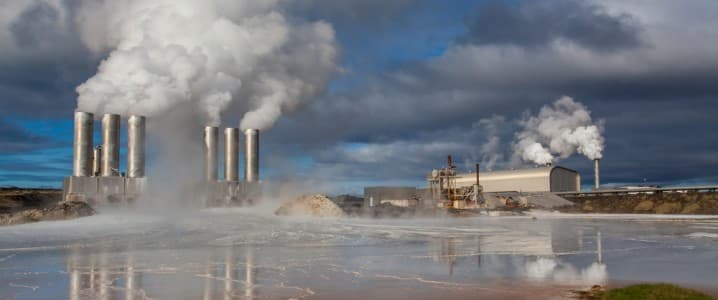
This month Baker Hughes announced an investment in San Francisco-based GreenFire Energy Inc, a geothermal technology company. GreenFire has previously received funding from the U.S. Department of Energy and the California Energy Commission. The firm creates Advanced Geothermal Systems (AGS), closed-loop systems that require no liquids to be input or extracted from the earth, meaning there is no fracking. The system allows fluids to circulate in sealed pipes and boreholes underground which pick up heat and transport it to the surface.
Executive Vice President of oilfield services at Baker Hughes, Maria Claudia Borras, stated: “The combined efforts of Baker Hughes and GreenFire Energy will bring a disruptive presence to the geothermal market, while also introducing new technologies to access geothermal energy from non-producing resources.”
While the CEO of GreenFire Energy, Joseph Scherer, highlighted the potential for global expansion, “This investment by Baker Hughes represents a fantastic endorsement of our technology, the promise for its global scalability and the progress we have made to date.”
As some energy majors begin to invest in the energy source, several U.S. universities are also exploring how they might harness geothermal power through the introduction of new technologies that could help develop the green energy source. In February, Quaise Energy, a startup with researchers from MIT, raised $40 million in funding to support its mission to access some of the world’s most hard-to-reach heat sources.
Quaise plans to drill down into the earth using high-frequency beams to melt and vaporize rocks. The funding will allow Quaise to apply its research to a real-world scenario, drilling holes in some of the U.S.’s largest untapped geothermal sources to see whether its machinery can withstand the heat needed to access this resource.
And Quaise isn’t the only research-led startup trying to develop new geothermal technologies. Several small U.S. colleges and universities are seeking new ways to develop green energies, such as Carleton College in Minnesota. The college completed a $41 million geothermal project last year, having drilled around 300 boreholes and installed 60 miles of piping over five years. The project creators also built an energy station with an 800-ton heat pump. Carleton now expects its energy use to fall by 40 percent and its emissions to decrease by 15 percent.
In other parts of the world, several countries and energy firms are also looking to develop their geothermal energy sectors. In Greece, the Ministry of Environment and Energy introduced a new policy this month allowing for the exploration, management, and exploitation of the country’s geothermal potential. Minister Alexandra Sdoukou, stated, “Today we are laying the foundations for the development of the rich geothermal potential of the country, which to date has not been used effectively.”
European energy firm E.ON is investing over $5.9 million to develop a geothermal project in Malmo, Sweden, looking to expand its energy portfolio. The firm will drill five to seven kilometers underground to tap into maximum temperatures of 160 degrees Celsius, which will be used to supply the city’s heating network. It is also partnering on geothermal projects in the U.K. and Germany.
While some governments and larger energy firms are investing in geothermal energy, it appears to be mainly research centers and startups that are investing in revisiting existing machinery and exploring new technologies to access the earth’s heat source. If one of these startups can create a drill that can withstand massive amounts of heat or find an alternative drilling technology, it could be a game-changer. Although largely overlooked due to difficulties in accessibility, geothermal energy could potentially power the world for generations to come, making greater investment and research into geothermal technologies a vital part of renewables development.